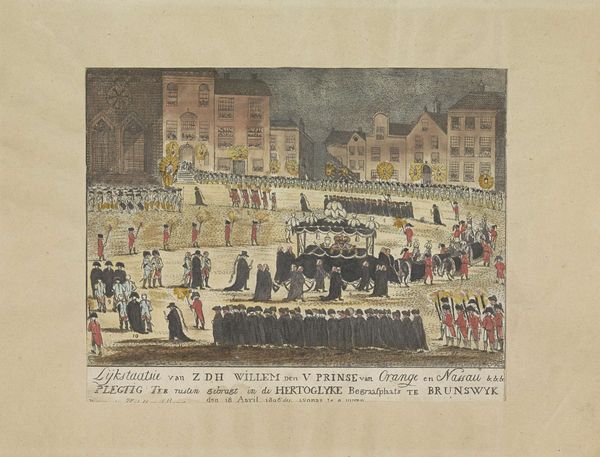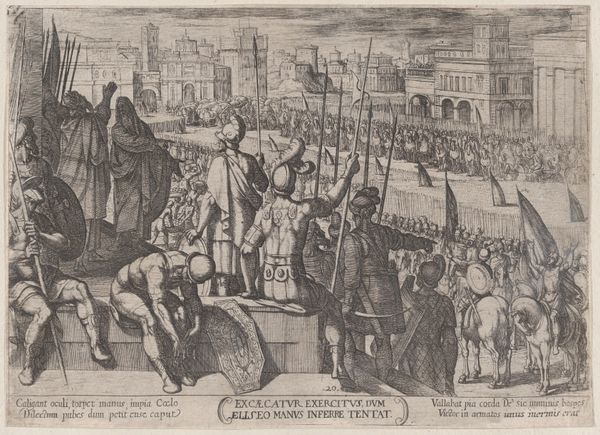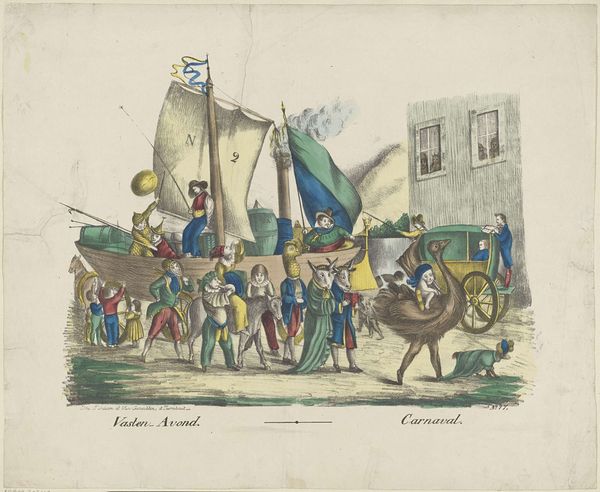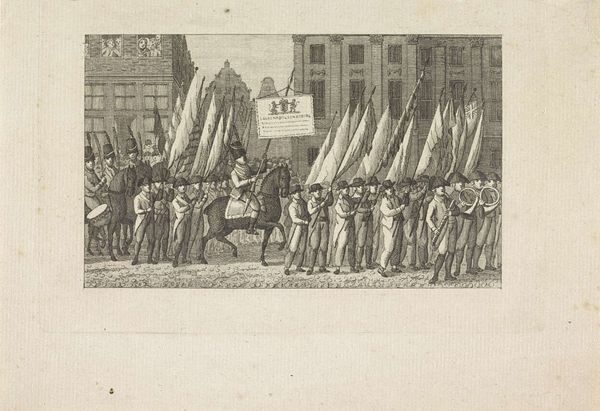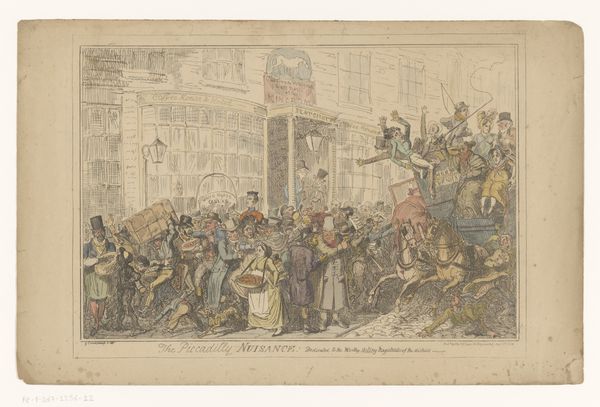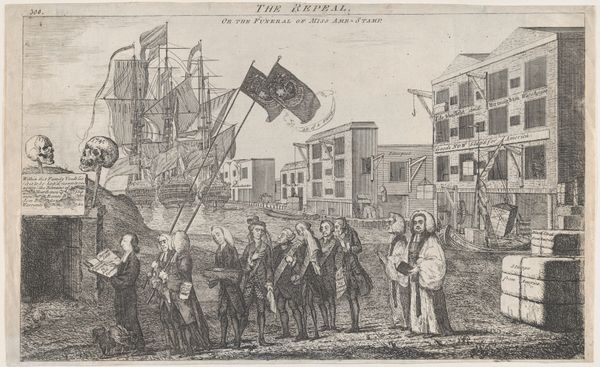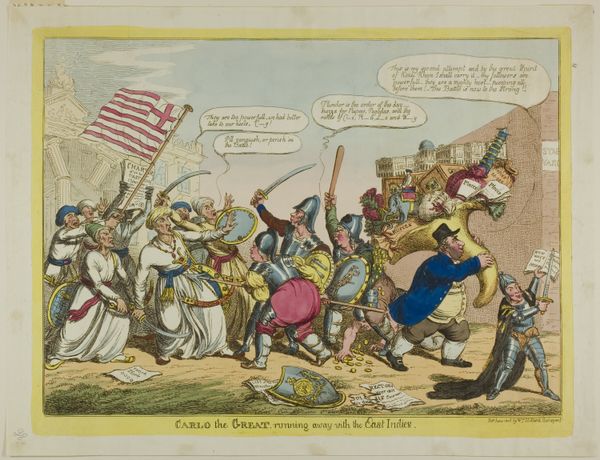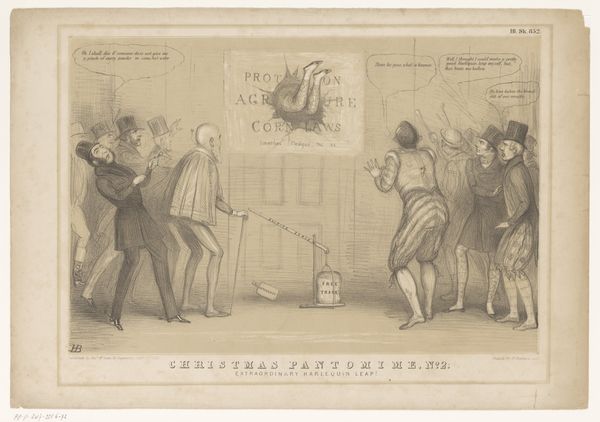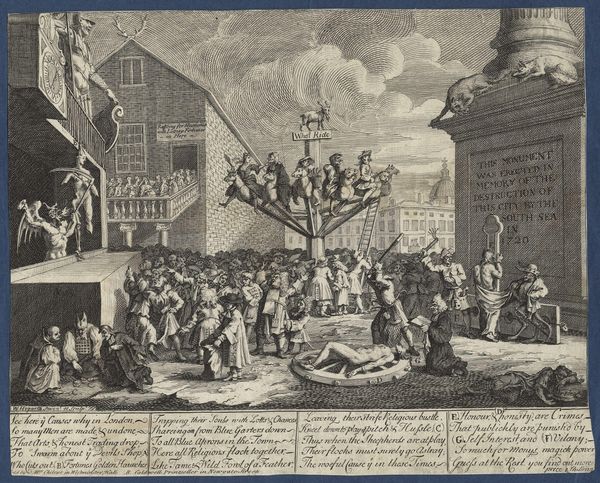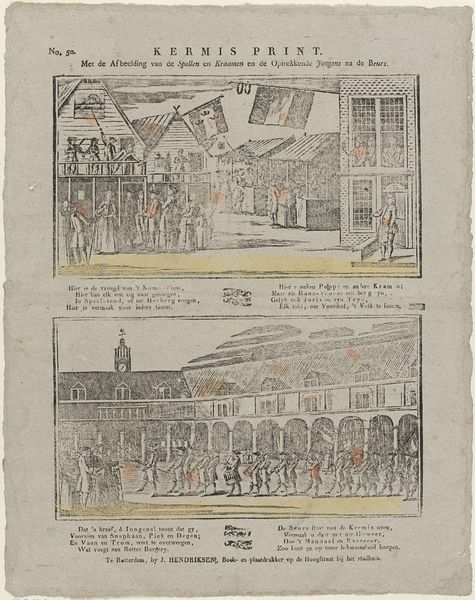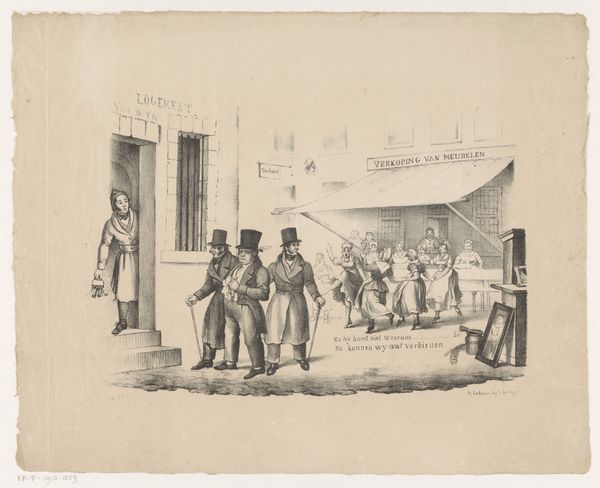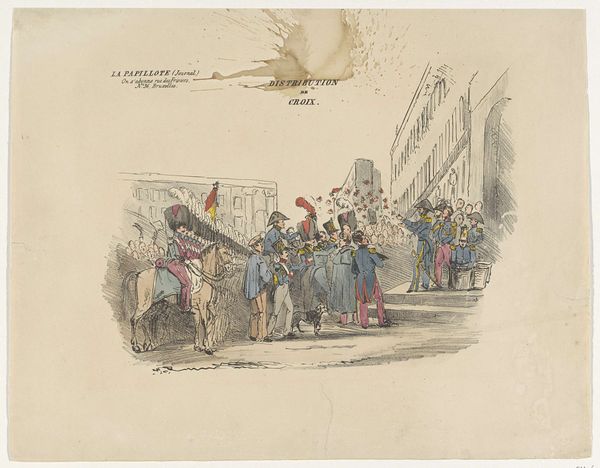
drawing, print, engraving
#
drawing
#
neoclacissism
# print
#
caricature
#
history-painting
#
engraving
Dimensions: plate: 8 7/8 x 13 5/8 in. (22.5 x 34.6 cm) sheet: 11 1/8 x 14 7/8 in. (28.3 x 37.8 cm)
Copyright: Public Domain
Editor: This is a print called "The Repeal, or the Funeral of Miss Ame-Stamp" from 1766. It’s an engraving, and quite satirical. It feels very staged, almost like political theatre. How would you interpret this work within its historical context? Curator: It’s definitely a performance of power and public sentiment. The Stamp Act was a pivotal moment. Look how the artist uses the funeral procession as a potent symbol. It visualizes the demise of a policy seen as detrimental to both British trade and American liberty. Editor: I see the "Miss Ame-Stamp" coffin reference in their hands, and is that supposed to be a burial vault to the left? Also, it looks like cargo being unloaded onto the docks on the right. It looks pretty detailed and crammed full of references. Curator: Precisely. Notice the merchants in the procession. They represent the British commercial interests who heavily lobbied for the Stamp Act’s repeal, fearing economic repercussions from colonial boycotts. And you rightly pointed out the ships unloading goods which highlights the restoration of trade, celebrating commerce over political control. Editor: It is interesting that they portrayed commerce in the context of a funeral, I didn't think about it from that angle. Who was this artwork for, what role did prints play in shaping public discourse? Curator: Exactly. These prints played a critical role. They were disseminated widely, reaching a broad audience in coffeehouses and homes. This wasn’t just about reporting an event, it was about shaping public opinion, solidifying a narrative around the Stamp Act as a near-death experience from which trade was saved. Editor: So it’s like political commentary, but through a visual and widely accessible medium? This print serves almost as propaganda shaping how events are perceived. Curator: In a way, yes. Think of it as a form of public service announcement and entertainment all in one, solidifying a shared understanding of a major political event. It’s visual shorthand for complex economic and political arguments. Editor: I learned something new; seeing political events from so long ago visualized. Curator: Indeed. Analyzing these prints reveals a great deal about the interplay between art, politics, and public opinion in the 18th century.
Comments
No comments
Be the first to comment and join the conversation on the ultimate creative platform.

